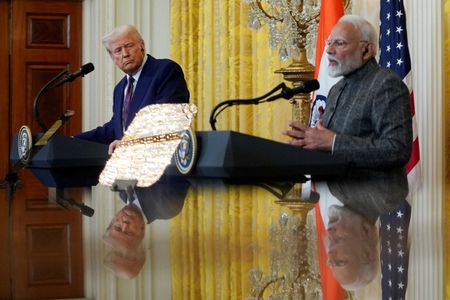By Ishaan Arora
(Reuters) -Gold prices rose on Wednesday, as bargain hunters stepped in after bullion dropped to a near one-week low in the previous session, while focus was also on the U.S. private payroll data for cues on future interest rate cuts.
Spot gold rose 0.9% to $3,966.65 per ounce by 0713 GMT. Bullion fell more than 1.5% on Tuesday, hitting its lowest since October 30.
U.S. gold futures for December delivery rose 0.4% to $3,975.30 per ounce.
The dollar held just under three-month highs touched in the previous session.
“It’s just bargain-buying and broader risk-off sentiment across financial markets supporting safe-haven demand for gold,” said Jigar Trivedi, a senior currency analyst at Reliance Securities.
Asian stocks extended an overnight selloff on Wall Street in early trading as investor concerns about stretched valuations sapped confidence. [MKTS/GLOB]
“Gold is being pressured by waning expectations of another rate cut this year and might see further pressure down to $3,900 if the ADP data is on the higher side,” Trivedi said.
The U.S. Federal Reserve cut interest rates last week and Chair Jerome Powell signalled it might be the last reduction in borrowing costs for the year.
Market participants now see a 69% chance of a rate cut in December, down from over 90% prior to Powell’s remarks, per CME’s FedWatch Tool.
Remarks from Fed officials have highlighted differing perspectives on how to address the current data gap.
With the U.S. government shutdown likely to become the longest ever, halting the release of government data, investors are focusing on non-official economic reports, including the ADP National Employment Report due later in the day.
Non-yielding gold tends to do well in a low-interest-rate environment and during times of economic uncertainty.
Bullion hit a record high of $4,381.21 on October 20, but has fallen about 10% since.
Elsewhere, spot silver gained 1.1% to $47.61 per ounce, platinum was up 0.4% at $1,541.17 and palladium added 0.5% to $1,398.28.
(Reporting by Ishaan Arora; Editing by Subhranshu Sahu and Eileen Soreng)








